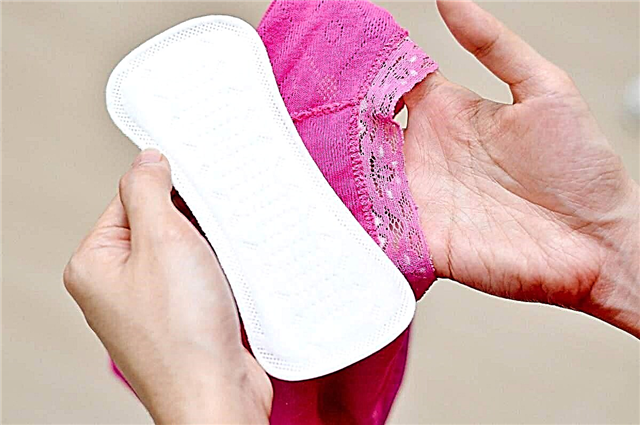
Peeling on the skin of a child is an alarming symptom, but not always dangerous. If you find in time the cause that led to the violation of the skin and eliminate it, the baby will delight the parents with soft and delicate velvety skin. In this article, we will tell you about what to do if peeling begins in children of different ages.

What it is
Peeling is a natural process. In this way, the outer layer of the skin - the epidermis - is freed from keratin cells. They mature and develop in the deep layers of the skin, during the day they pass the way from the depth to the surface, simultaneously synthesizing keratin, and then, when their lifespan ends, they die off and disappear. The peeling process in medicine has a very specific name - desquamation.
With pathological desquamation, keratin cells live a shorter period of time, quickly come to the surface and die in large quantities - peeling becomes noticeable.

With physiologically caused peeling, the process remains almost invisible to the human eye - the scales that peel off are so small that they can only be seen through a microscope.
If the skin did not have the ability to peel off, the dead keratin cells of the epidermis would gradually create a thick and durable layer, keratinized, similar to the shell. In order for the skin to remain elastic, nature has created this unique mechanism in its own way - desquamation.
However, peeling is not always normal. Quite often, the lifespan of keratin cells decreases due to a number of unfavorable factors, both external and internal.

Peeling reasons
Children's skin with enhanced desquamation can respond to both adverse living conditions and various diseases. In children of the first year of life, peeling of the scalp and body is relatively harmless - it indicates that the skin is adapting to a new habitat, because during pregnancy the baby was surrounded by water, and after birth - by air.
Such natural peeling usually does not have a catastrophic scale, but if a large area of the skin is peeling, then it is worth thinking about other, more serious reasons for this phenomenon. The most common causes of excessive desquamation are as follows.

Dry skin
Dryness of the skin is rarely congenital, because all babies at birth have a sufficient supply of lipid fatty lubricant, which protects the thin children's skin from the harsh realities of the world around them. This layer can become thinner under the influence of a variety of reasons, the most common is dry air and heat in the house where the baby is growing.
The hotter, the drier the air is, which is why more often peeling is observed precisely in winter, when heating is working in apartments, which strongly dries up the air. Most often, due to the microclimate, the skin dries out in infants and preschool children.

In adolescents, the sebaceous glands work more actively under the influence of sex hormones. The downside of this fact is the formation of acne, but the undoubted plus lies in the fact that peeling is almost not threatened.

Vitamin deficiency
Children of any age may experience peeling against the background of insufficient amounts of vitamins A and E in the body. It is these substances that make human skin elastic and elastic, regulate cellular metabolic processes in its layers. Such a vitamin deficiency occurs in infants if the breast milk contains little retinol (A) or tocopherol acetate (E).
The skin becomes fragile and vulnerable without these substances even in older children.

In vitamin-deficient flaking, flaking often occurs on the fingers, toes, nose, chin, and scalp.

Hygiene errors
A negligent attitude to hygiene requirements, rare washing, contamination of the skin lead not only to peeling, but also to infection of the resulting cracks. However, washing too hard, daily use of soap, baby shampoos, and bath foams also lead to dry skin and, as a result, to desquamation.
The lipid protective layer, which protects the skin from external aggressive factors with frequent use of cosmetics and alkaline detergents such as soap, is quickly erased, the skin ceases to retain moisture.
Due to poor hygiene, peeling usually occurs behind the ears, on the scalp, on the legs and arms, and inside the ear.

Hormonal changes
The deepest reasons may lie in hormonal status. Usually, the skin reacts by peeling to a change in the balance of certain hormones. Such peeling often occurs in adolescence, during the period of a change in hormonal status on the child's face, heels and palms.

External environment
Peeling is especially susceptible to the skin of a child who walks a lot and for a long time in the sun, in strong winds, during frost. Drying out of the epithelium and premature death of keratin cells in this case have exclusively external reasons. Such desquamation manifests itself on all open parts of the body, which are exposed to the action of wind, sun, and low temperatures. Usually, the skin flakes off in places, there is a slight discoloration of the skin on the affected areas.

Allergic reaction
With food, drug, seasonal and other types of allergies, which are accompanied by dermatological symptoms, peeling, as a rule, does not begin immediately, but a few days after the appearance of a rash and redness. Red peeling spots prone to merging can appear on the body, on the face , on the chest and back. In babies under one year old, such spots with fragments of desquamation quite often appear on the back of the head and on the forehead, between the eyebrows.

Peeling in this case is caused by pathological drying of skin areas that have previously undergone an inflammatory process under the influence of an immune response to antigen proteins or under the direct action of an allergen without the participation of the immune system.
Fungal diseases
The cause of severe peeling can be a fungal skin disease. There are a great many fungi that can cause mycoses. Desquamation in this case accompanies skin lesions in the places where fungi colonies are located.
Usually, in children, such peeling has a whitish, almost colorless, shade. It is localized most often on the scalp, on the foot, on the palms and the back of the palms, in the eyebrows and even on the upper or lower eyelid if mycosis has spread to the ciliary area.

Other diseases
Peeling skin is associated with diseases such as psoriasis, ringworm, seborrhea, some forms of diabetes, thyroid problems, as well as kidney problems and extensive helminthic infestations.

What does it look like?
The peeling, which should not cause much concern, looks non-inflamed, without redness, swelling, without the formation of deep bleeding cracks in the skin. With physiological desquamation, a rash never appears, the skin does not flake off in large "flaps", there is no grayish or silvery discoloration of flaking scales. Infected cracks are dangerous.
If the skin is dry, then its integrity is easily broken even with a light touch. Under such conditions, the attachment of a bacterial or viral infection may occur, the "entrance gate" for which will be a crack or microtrauma on the skin. In this case, inflammation, suppuration, soreness appears.

If you find such signs, you should definitely consult a doctor, since the causes of peeling can be far from harmless.
Diagnostics
Diagnosis consists in the fact that the doctor collects a complete history - when and with what state of health the child was born, whether there are dermatological problems in his immediate family, what he eats, what has been ill recently. In appearance of the skin, the presence or absence of itching, pain sensations, the doctor will be able to put forward presumptive diagnoses.
Putting everything in its place will help laboratory diagnostics. Analysis of blood, urine and feces is a necessary minimum that will have to be taken. Sometimes they can send for a blood test for the content of hormones, as well as for an allergy test if an allergic reaction is suspected in the child.

Treatment
General recommendations:
- Treatment for dry skin, whatever the cause, always begins with a change in the child's living conditions.
- They humidify the air in his room as much as possible, begin to monitor the air temperature. The best in terms of beneficial effects on the skin are the following parameters: the temperature is not higher than 21 degrees Celsius and the air humidity is 50-70%.
- A humidifier will help to create such conditions, since the device is inexpensive, as well as special taps - limiters that allow you to regulate the temperature in the heating batteries.
- Correctly selected clothing and, most importantly, its quantity will help reduce sweating, which also contributes to drying out the skin. You can't dress the child too warmly, wrap him up. You should also avoid prolonged skin contact with synthetic fabrics, in which perspiration and evaporation is disturbed.

- For the duration of treatment, the use of soaps and shampoos should be limited, even if they are for children, special hypoallergenic. Washing with soap should be carried out no more than once a week; it is also worth washing your head with shampoo no more than once every 7 days.
- Foams, gels and other cosmetics for the skin should be abandoned altogether.
- Dry skin should not be treated with alcohol and solutions containing alcohol, lotions.
- You can not wash the child with too hot water, steam with a broom in the bath. But the door to the bathroom should be kept closed during water procedures to create additional moisture in the air.

- After bathing, areas with peeling should be lubricated with any oil-based product, for example, baby cream. The use of powders with a tendency to dryness of the skin is prohibited.
- It is important to make sure that the child drinks more liquid, does not stay in the sun or wind for a long time. Usually, these measures are more than enough in order to solve the problem with skin flaking once and for all.
- If the cause of desquamation is related to the disease, then appropriate treatment is added to the indicated recommendations.

For allergies
To rid a child of allergic spots with a flaky surface, doctors recommend antihistamines - Suprastin, Erius, Tavegil and others. But first of all, they try to protect the child from contact with the allergen. They are reviewing their nutrition, excluding products that are dangerous in terms of the likelihood of developing allergies from the diet. Special attention is paid to detergents and laundry detergents so that they also do not contain allergens.
Declare house dust war... If the peeling does not go away within a week, the doctor may prescribe ointments on a hormonal basis - "Advantan", "Triderm". In severe cases, the child is injected with antihistamines together with calcium supplements, and is also prescribed treatment with glucocorticosteroid hormones, in particular, "Prednisolone".

With a fungal or bacterial infection
If laboratory tests reveal fungal or bacterial skin lesions, the doctor prescribes appropriate therapy. With mycoses, the child undergoes a fairly long-term antifungal treatment, both with external drugs and with drugs for oral administration. After the prescribed course, a short break is taken and then the treatment is repeated to prevent relapse.
Bacterial infections often require antibiotic use - most often in ointments, as well as antiseptics (aniline dyes, hydrogen peroxide).

With vitamin deficiency desquamation
It is often possible to restore the balance of vitamins A and E after prescribing oily solutions of these vitamins for topical application. They are applied and easily rubbed into scaly areas after bathing, when the skin is steamed and saturated with moisture. Care should be taken to lubricate the flaking areas on the face and behind the ears.
Then the child is discharged vitamin complexes by age, and give recommendations to parents on how to organize the baby's meals - buckwheat porridge, red and orange vegetables, butter, fatty dairy products, fresh herbs and fruits, cod liver - this is exactly what should be on the child's table with a deficiency of vitamins A and E.
Usually, after eliminating the disease or condition that caused the deterioration of the skin, the peeling stops.

Prevention
So that the skin of a son or daughter always remains elastic and does not flake off, you should observe measures to prevent drying out of the skin:
- Do not overheat or overcool the child.
- Do not experiment with cosmetics and various detergents.
- Ventilate more often and do wet cleaning at home.
- Make sure your child drinks enough liquid.
- Do not wipe baby skin with vodka or alcohol.
- Do not give your child any medication without a doctor's prescription.
- To harden the baby from birth (the skin develops local immunity up to 5-6 years, it is the first five years that are very important for hardening procedures).
- Monitor nutrition - do not give allergenic foods, and also control that the diet contains a sufficient amount of trace elements and vitamins necessary for normal growth and development.
For more information on how to care for dry, atopic skin, see the following video.



